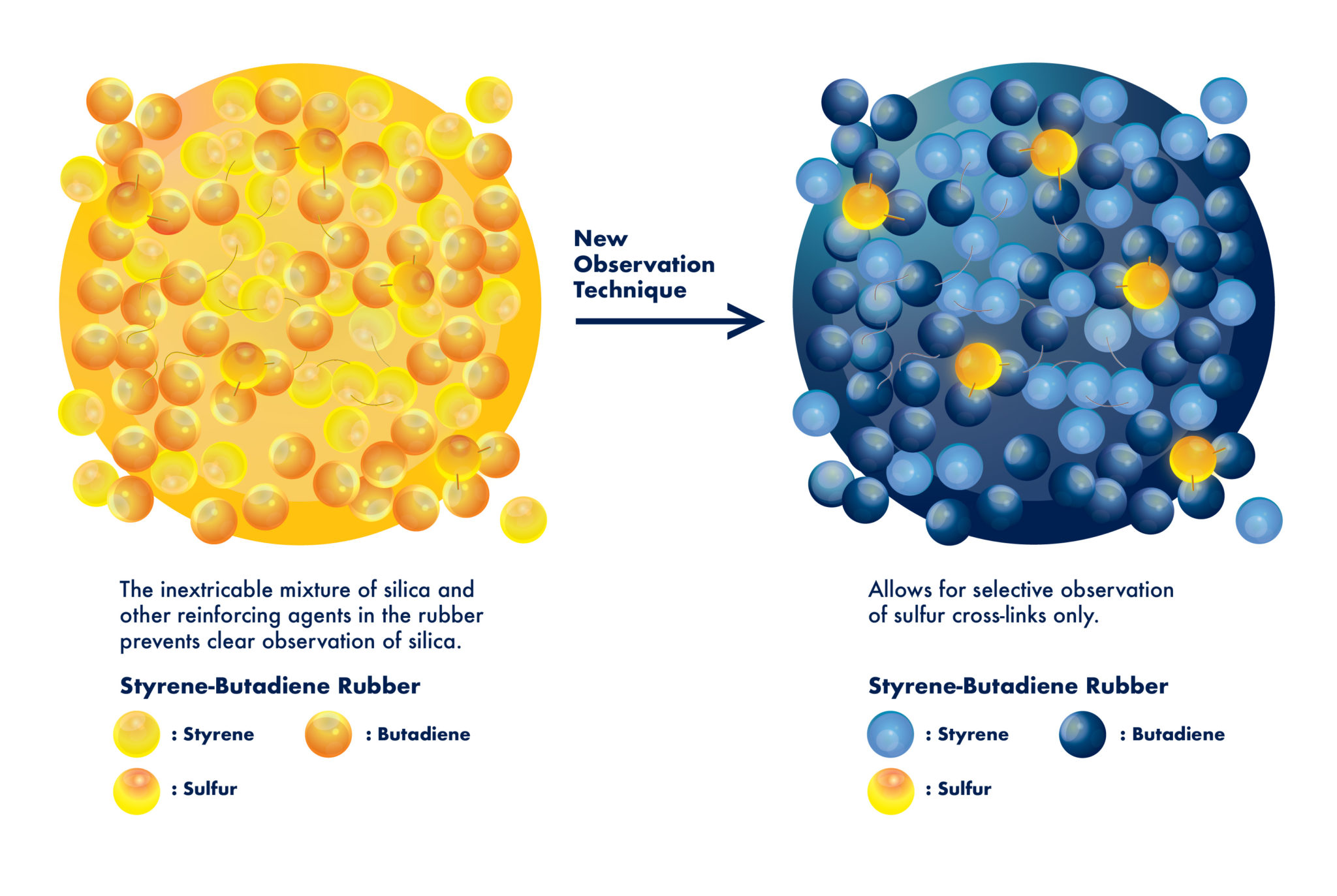SRI’s microscope analysis has potential for new breed of highly efficient tyres

New technique to selectively observe individual materials within tyre rubber has been developed by Falken Tyre manufacturer alongside Ibaraki University
A new technique to observe and analyse individual materials within tyre rubber offers “enormous potential” for the development of high-performance tyres with unprecedented levels of efficiency and wear resistance, engineers at Sumitomo Rubber Industries (SRI) and Ibaraki University claim.
The rubber used in automotive tyres is made up of dozens of different types of materials including polymers such as natural and synthetic rubber, reinforcing agents containing carbon and silica and so forth. These various materials form complex, hierarchical structures within the rubber that directly affect performance. For example, the structures formed by sulphur cross-links, which give rubber its elasticity, have long been thought to be closely related to rubber strength and changes in rubber properties over time (such as degradation). Until now, the details of these structures within rubber have been a mystery.
To understand these interactions, a new particle beam microscope was developed by Ibaraki University in Japan. It can evaluate the actual rubber used in mass-produced tyres rather than less representative processed test samples. The microscope generates clear images of elements such as the sulphur cross-links or reinforcing agents and assigns specific colours to each element to clearly identity them.
“Being able to evaluate the very structures of tyres themselves, provides us with image data which can be used to develop internal structures for future tyres that provide superior performance in terms of fuel efficiency, wear resistance and so forth,” says Sumitomo Rubber Europe GmbH’s Dr Bernd Löwenhaupt. “This breakthrough offers enormous potential for the acceleration of our material development process. Using this technique, we have already succeeded in observing both coarse areas and fine areas (i.e. density) of sulphur cross-links within rubber in vivid detail for the first time.”




Comments